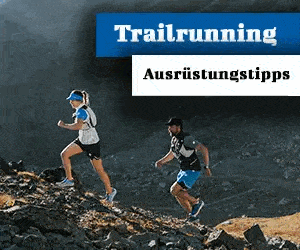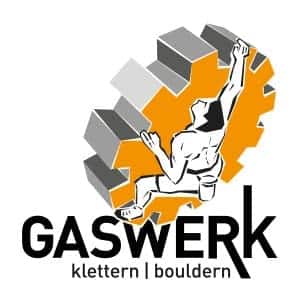In today's post, Simon Deussen shows us an innovative therapy method for the treatment of acute and chronic tendon complaints such as elbow, shoulder, patella, Achilles, foot and plantar tendons: the Epte therapy.
A guest contribution by Simon Deussen - owner of PhysioVision Zurich - With the support of Minimum bouldering and Gasworks climbing center
Many of us are familiar with it: tendon pain when returning to work or after intensive training. You take a week off, try out exercises from the net and adjust the climbing load. For one, the complaints are gone, others are horrified to find that nothing has helped.
It is precisely in this phase, i.e. two to three weeks after the overload, that the transition between the proliferation and remodeling phase takes place. If the body does not heal completely here, long-lasting complaints occur quite often. What now!?!?! Take a break or continue climbing? Therapy and if so, which one?
Most of the patients relapse
One of the biggest frustrations in practice is that a patient with tendon complaints, despite all efforts, simply does not get better and retains symptoms in everyday life and sports. It is not uncommon for patients to even accept a cortisone injection in order to be able to do sport again without symptoms. However, the majority of these people relapse and damage the tendon can result. There are of course alternative injections such as autologous blood injections, but here too the evidence and what it brings to the athlete is quite modest. It just took a new approach.
Self-healing is promoted with EPTE
EPTE therapy activates the first phase of every paralyzed regeneration process in tendinopathy. This consists of the application of galvanic microcurrents through an acupuncture needle. In this way, the therapist uses the inflamed and / or damaged soft tissue (tendon) and initiates its self-healing (without medication). The electrolysis causes the destruction of the degenerated tissue and triggers a new inflammatory reaction phase (48 hours), which is necessary for every regeneration process. It is the organism itself that initiates its self-healing, triggered by the effect of therapeutic percutaneous electrolysis. In principle, EPTE therapy can bring the pH value in the tendon into a basic range. This usually reduces the pain immediately and very significantly and you can exercise moderately after 48 hours. In addition, a special EPTE tape is put on and a training plan is discussed. The therapy session takes place once a week over a period of around 6-8 weeks.
Due to the high success rate of EPTE therapy, I don't have any patients who have been in therapy for a long time or who come back with the same symptoms. From my experience I can say that acute tendon problems should be treated most effectively in the 2-3 weeks after the overload. In this phase, most patients are sustainably symptom-free after just 1-2 EPTE sessions.
Where does the EPTE treatment method come from?
The cradle of EPTE therapy lies in Spain and is practically unknown in German-speaking countries. The abbreviation stands for "Therapeutic Percutaneous Electrolysis Therapy" and was developed precisely for these tendon complaints.
The road to success is often difficult
When I heard about this new type of therapy, I was very interested and asked myself: Should I learn another apprenticeship over two years and spend a lot of money? Is it really as effective as promised? Will it be possible to establish this therapy in Switzerland? Is there any resistance from the doctors? It was precisely these challenges that drove me to do pioneering work in Switzerland. 2 years later I can now say with enthusiasm that EPTE is not just another therapy method in my little case, but it has changed my entire therapeutic thinking and acting around tendon complaints.
This is how the EPTE treatment method works
The benefits of EPTE therapy
EPTE therapy has a clear advantage over conventional forms of therapy. Immediately after the treatment or after 48 hours you will feel a significant reduction in pain and the mobility and resilience of the tendon will improve. You also benefit from a cause-related, shorter, damage-free and more sustainable therapy compared to the "traditional" forms of treatment.
- Very efficient technology (a few minutes per session)
- Improved mobility and pain modulation within 48 hours
- Relatively painless therapy and hardly any negative side effects
- Average duration of treatment 6th sessions
- Training is still possible
- Low treatment costs (in comparison) and only 1st session per week
- Easily executable training for home / gym
- EPTE can be combined with almost all other therapies
- Examination of the affected and unaffected side for individual and targeted tissue analysis by sonography by the therapist
EPTE therapeutic percutaneous electrolysis is indicated for all types of patients, regardless of whether they are athletes or non-athletes.
About the article series
The series of articles with Simon Deussen takes up climbing-specific health topics at regular intervals. The series of topics is presented by the Bouldering hall minimum and the Gasswerk climbing center.
About Simon Deussen
Simon Deussen is a climbing physio and MSc manual therapist and owner of the Physio Vision practice in Zurich. As a passionate climber, he knows the needs of climbers from his own experience.
www.physio-vision.ch
That might interest you
Do you like our climbing magazine? When we launched LACRUX, we decided not to introduce a payment barrier. It will stay that way, because we want to provide as many like-minded people with news from the climbing scene.
In order to be more independent of advertising revenue in the future and to provide you with even more and better content, we need your support.
Therefore: Help and support our magazine with a small contribution. Naturally you benefit multiple times. How? You will find out here.




